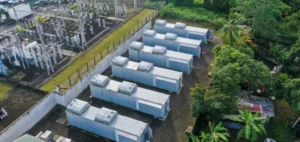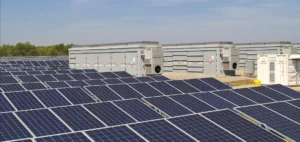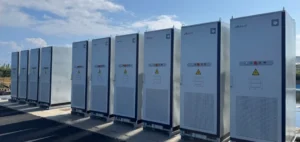Real-time optimization of energy and ancillary services represents a major breakthrough for the Texas electricity market.
Scheduled to go into effect on December 5, 2025, this Electric Reliability Council of Texas (ERCOT) initiative aims to improve the efficiency of the electricity market by integrating ancillary services into the real-time dispatching process.
The move, which comes some six months ahead of schedule, comes as power system reliability has become a priority, particularly after the extreme weather events that tested the system in 2021.
Real-time optimization, or RTC (Real-Time Co-optimization), involves using the least costly resources first to meet energy demand and ancillary services.
Currently, ERCOT acquires ancillary services mainly on the forward market, without significant real-time adjustments.
Pablo Vegas, President and CEO of ERCOT, points out that “the implementation of real-time optimization is the most significant improvement in the market since the creation of the nodal design in 2010”.
This initiative is seen as a crucial milestone in planning and monitoring the completion of the RTC project, aimed at creating a more dynamic and efficient electricity market.
Optimization context and challenges
Auxiliary services play an essential role in power system reliability, maintaining frequency and voltage on the grid.
In February 2019, the Texas Public Utilities Commission ordered ERCOT to implement real-time optimization as soon as feasible, with an estimated cost of around $40 million and a lead time of four to five years.
However, work on the RTC project was suspended after the winter storm of February 2021, which caused massive power outages.
In June 2023, ERCOT reassessed the cost of the project at around $50 million, with an additional three to four years’ lead time.
A June 2018 cost-benefit analysis by Potomac Economics, ERCOT’s independent market monitor, found that had real-time optimization been in place in 2017, it would have saved approximately $1.6 billion in energy costs, $257 million in system congestion costs, and $155 million in ancillary service costs.
These figures underscore the potential impact of this initiative on the economics of the Texas electricity market.
Storage capacity integration
Initially, the RTC project did not take into account the involvement of battery storage.
However, the operational capacity of batteries in the ERCOT network has increased considerably, from 275 MW at the end of 2020 to almost 8.9 GW at the end of August 2023.
This development has led to the project’s designation as RTC+B, thus integrating batteries into the system.
ERCOT is planning market trials for RTC+B from May 2025 to November 2025, enabling the impact of this integration on the market to be assessed.
Keith Collins, ERCOT’s Vice President of Commercial Operations, states that “once implemented, these enhancements will provide operational and reliability benefits to the ERCOT system, as well as estimated annual savings of over $1 billion in the wholesale market”.
These savings are expected to translate into benefits for electricity consumers in Texas, strengthening the economic viability of the system.
Future prospects
Real-time optimization of energy and ancillary services could transform the Texas energy landscape, making the market more responsive and improving resource management.
Increased battery storage capacity, coupled with resource optimization, could also play a key role in the transition to a more resilient energy system.
Grid reliability challenges, exacerbated by extreme weather events, underline the importance of such an initiative.
The implications of this optimization go beyond mere financial savings.
They also affect the way Texas manages its energy transition, integrating emerging technologies and meeting the growing needs of an expanding population.
By implementing these changes, ERCOT is positioning itself as a key player in the evolution of the electricity market, while meeting growing expectations for reliability and efficiency.





















